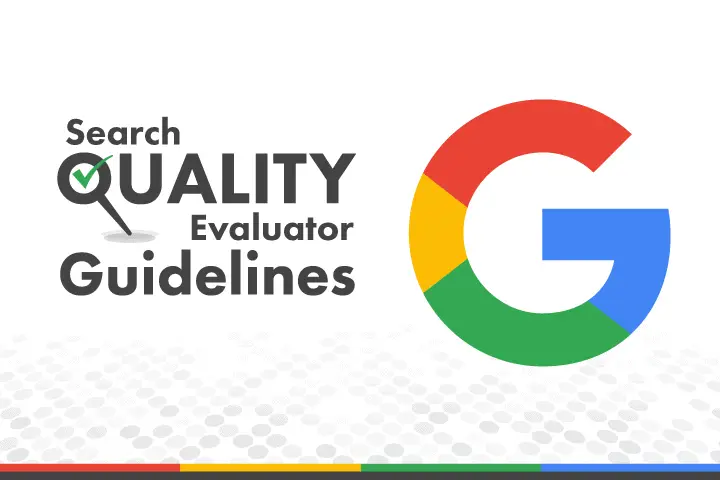
Understanding Google’s Search Quality Guidelines: What Still Matters Today
Why Google’s Search Quality Guidelines Still Matter
In 2011, Google introduced a detailed Search Quality Rating Guidelines document for human evaluators. While the document was originally designed for Google’s internal search raters, it provided valuable insights into how Google defines high-quality content, webspam, and user experience.
Fast forward to 2020, and while Google’s algorithms have evolved with AI, many of the core principles remain unchanged. Understanding these guidelines is still crucial for anyone involved in SEO, content creation, or digital marketing.
In this blog, we’ll introduce Google’s Search Quality Guidelines, explore why they still matter, and outline our upcoming blog series that breaks down these principles into actionable strategies.
Google’s Search Quality Guidelines help human raters evaluate web pages to determine whether they:
✔️ Satisfy user intent (Do-Know-Go queries)
✔️ Provide valuable, high-quality content
✔️ Follow Google’s best practices for usability and trustworthiness
✔️ Avoid webspam techniques that manipulate rankings
While these ratings don’t directly impact rankings, they influence how Google’s algorithms evolve—meaning what Google values in a “good” webpage is shaped by these guidelines.
To fully understand Google’s Search Quality Guidelines, we’ll explore them in a 10-blog series, each focusing on a key aspect of search quality.
🔟 Blog Series Overview: Google’s Search Quality Guidelines Explained
1️⃣ Introduction to Google’s Search Quality Guidelines (Overview of the document, its purpose, and how it impacts SEO.)
2️⃣ Understanding Search Intent: Do, Know, Go Queries (How Google categorizes search intent and why it matters for ranking.)
3️⃣ What Makes a High-Quality Page? (Vital vs. Useless Pages) (Explaining the different ratings and factors that make a page useful or not.)
4️⃣ Google’s Page Quality Rating: Key Factors Explained (Breaking down authority, trustworthiness, user experience, and content quality.)
5️⃣ The Role of E-A-T (Expertise, Authoritativeness, Trustworthiness) in Google Ranking (How Google evaluates credibility and why E-A-T matters for SEO.)
6️⃣ Understanding Webspam: Google’s Guidelines on Spam Detection (How Google detects and penalizes webspam, including cloaking, keyword stuffing, and thin content.)
7️⃣ Thin Content & Low-Quality Pages: How Google Filters Them (Understanding what makes content low-quality and how to avoid getting penalized.)
8️⃣ How Google Handles User Experience and Site Usability (Page speed, mobile-friendliness, site navigation, and overall UX signals Google considers.)
9️⃣ Google’s Content Flags: What Triggers a Search Rater’s Warning? (Adult content, misleading pages, harmful sites, and other flags Google raters use.)
🔟 The Evolution of Google’s Search Quality Guidelines Over Time (How Google’s rules have changed since 2011 and what SEOs should learn from it.)
🔹 Bonus Topic: The Future of Google Search: AI, Algorithm Updates & Evolving Guidelines (How AI and machine learning influence search ranking today and beyond.)
🚀 SEO Fundamentals Haven’t Changed: While algorithms are now powered by AI and machine learning, Google’s emphasis on quality content, intent-driven search, and user experience remains the same.
⚠️ Webspam Still Exists: Google continuously refines its systems to fight against black-hat SEO techniques, manipulative ranking tactics, and low-quality content. Understanding webspam guidelines is essential to stay compliant.
✅ E-A-T Is More Important Than Ever: With the rise of Google’s Helpful Content Update and AI-generated content, expertise, authoritativeness, and trustworthiness (E-A-T) are major ranking factors.
Google’s Search Quality Guidelines from 2011 laid the foundation for today’s ranking systems. While the algorithms have become more sophisticated, the core principles still guide how pages are evaluated today.
In the coming weeks, we’ll break down these guidelines into actionable insights to help you improve rankings, enhance content quality, and future-proof your SEO strategy.
Stay tuned for Blog 1: Introduction to Google’s Search Quality Guidelines! 🚀
📧 Email: vikasamrohi@gmail.com
